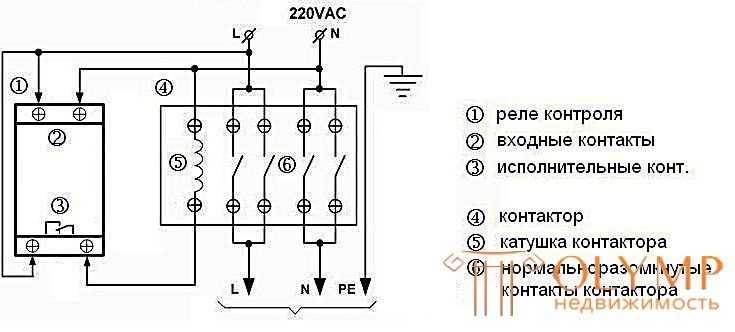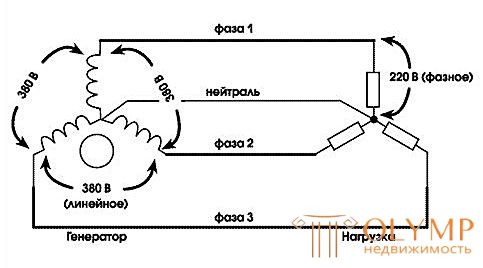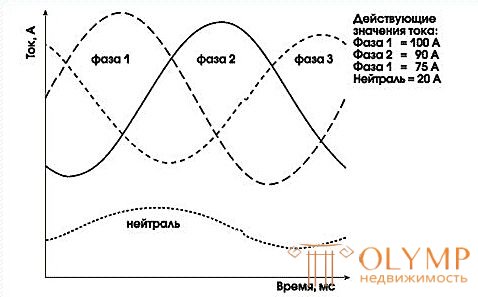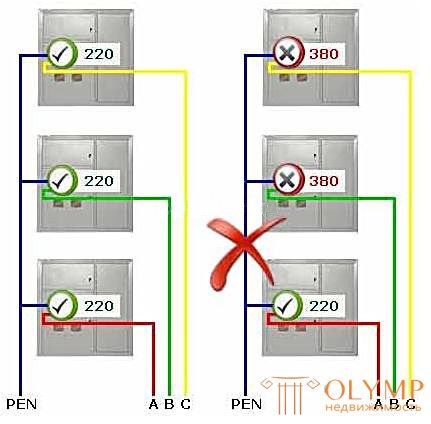
Our electrical appliances and household appliances, every day, every hour, every minute, are at risk of failure from overvoltage. Could anyone, even twenty years ago, imagine that in each apartment there would be an electric kettle, a washing machine, a color TV and not one, a two-chamber refrigerator, a microwave, a coffee maker, a dishwasher, a washing machine, and a lot more ... K besides, many tenants, with the summer disconnection of cold water, are struggling with the installation of water heaters. Wiring is simply not designed for such a load, and sooner or later fails - this is one hundred percent not a warranty case for your household appliances.
In case of emergencies, instead of 220V, voltage up to 380-400V can be applied to the electrical network of residential buildings, apartments, and offices.
The phenomenon of re-voltage is mainly associated with the breakage of common supply neutral conductors, when the supply voltage is divided unevenly between consumers.
Breakage of the neutral conductor can occur:
• • When the grid is overloaded (the energy consumption of housing increases steadily every year);
• • Under adverse weather conditions, where power is supplied by an air line (wind, fallen tree, etc.);
• • In case of poor contact at the junctions of the neutral conductors;
• • When stealing non-ferrous metal (wires);
• • With old, dilapidated wiring inside the house network;
• • Due to maintenance staff errors.
Electrical network. A bit of history.
The electrical networks began simply: there was a generator and two wires stretched from it, to which anyone could connect an electric light bulb, a motor, and similar devices.
Many, knowing that two power wires fit their outlet, they think that, in terms of connecting the load, nothing has changed since then.
In fact, in 1891 an event occurred that complicated this simple scheme. The Russian scientist Dolivo-Dobrovolsky invented a three-wire three-phase network. The advantages of a three-phase network for power engineers are so great that even in the foreseeable future, experts do not see an alternative to it.
The classical three-wire three-phase network was created to connect three-phase loads (mainly electric motors) and is ideally suited for them. In the case of a three-phase load, the currents consumed in each of the phases are the same. Therefore, all three phase voltages are also the same. 
If single-phase loads (electric lamps, computers, etc.) are included in the three-phase network, the load resistances in different phases may not be the same. Phase voltages in the classic three-phase network will also become different. For example, if two phases are little loaded, and the third is heavily loaded, the voltage in the heavily loaded phase will be much lower than the nominal - 220 V (the voltage may be insufficient for normal equipment operation), and the voltage in the underloaded phases will be much higher than the nominal (and connected to equipment may fail). The described phenomenon of electricians is called phase misalignment.
In order to equalize the voltages in the three-phase electric network, one more, so-called neutral wire, or simply “neutral” (see fig.) Was introduced into the circuit.
A current flowing through the neutral wire compensates for the difference in the currents in the individual phases. Due to this, the voltages in different phases are aligned.
Now it’s clear how dangerous a broken wire can be. This type of malfunction will immediately lead to phase imbalance and damage to single-phase equipment.
A significant part of the power of a three-phase electrical network is consumed by three-phase loads (electric motors, furnaces, etc.). Each of the three-phase loads equally loads all three phases of the network. If the main power of the network is consumed by single-phase loads, for example, in an office building, electricians try to distribute the load over the phases more or less evenly. 
Here is a typical oscillogram of currents in a three-phase electrical network loaded with lamps or electric motors. The currents in the linear wires differ by no more than 25%. Therefore, the current in the neutral wire is small. It is not more than 20% of the average current in the linear wires.
Based on this typical picture, a neutral wire is usually made thinner than the other wires of a three-phase electrical network. For example, in a three-phase power cable designed for a network power of about 70 kVA, the line wires have a cross section of 35 kV. mm, and the neutral wire - 16 square meters. mm This allows you to save a lot of expensive copper and is usually not dangerous, since the current flowing through the neutral wire is small.
What happens when a zero breaks?

In large apartment buildings, the distribution of electricity between consumers is carried out by connecting apartments on different floors to different phases. On the left side of the figure shows the network, and on the right emergency, which, unfortunately, is not such a rarity.
Where does 380 come from? Everything is simple, although in fact it is a convention. One phase, through the load, along the section of the circuit, which before the accident was zero, meets the other - this results in increased, and somewhere, and reduced voltage.
To protect yourself from trouble with electricity, you can do it quite easily and inexpensively. There are both single-phase and three-phase protection devices that are installed on a DIN rail with RCDs and circuit breakers.
Having decided to protect your apartment from overvoltage, you should not blindly trust products with fantastic characteristics from unknown or little-known manufacturers. You should be wary of relay "made in China", "capable" of switching an incredible power of 50 - 60 - 80 A at 250 - 300 V, that is, more than 20 KW.
It is better to rely on proven microprocessor control devices from sufficiently well-known manufacturers with adequate characteristics in conjunction with powerful contactors. .
For example, relay РН-111М, РН-113, ASPauto1M, ASPauto1R, ASPauto1RM, ASP-1V / ASP-1RV + modular contactors from ABB , small contactors of the KMI series from IEK (although the latter make a lot of noise during operation, they are much cheaper (you can install on the ground)) 
Что бы оставить комментарий войдите
Комментарии (0)